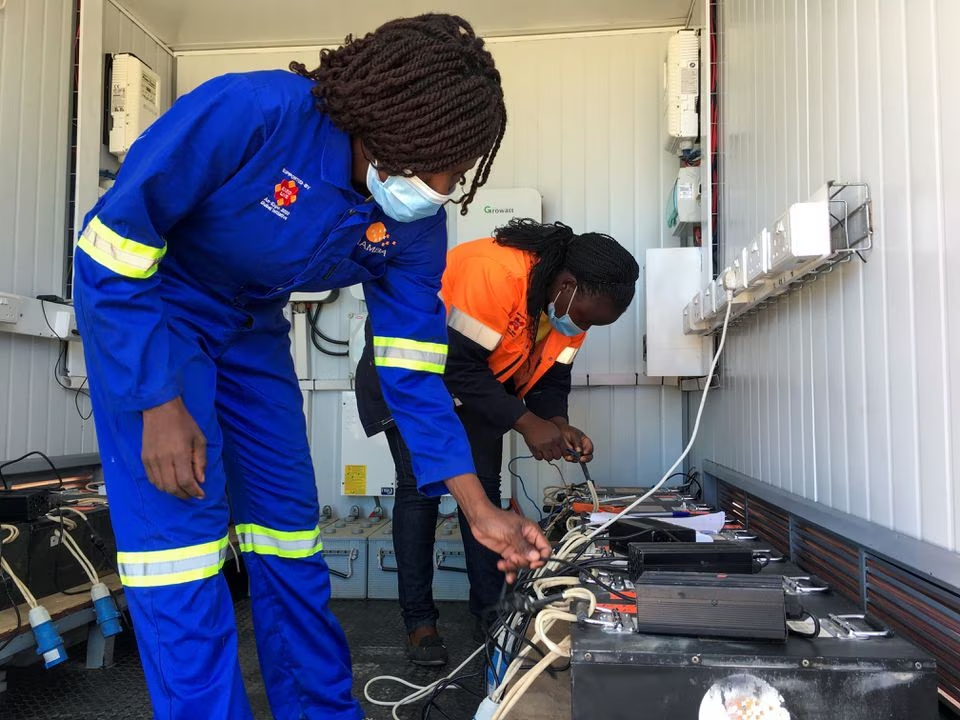
SINCE lithium is largely covered in mystery and complexities, this second part of the article will continue to disentangle some intricate issues.
The previous instalment gave a comprehensive description, which serves as an ample introduction.
At this stage, the goal is to give more enlightenment on price volatility, substitutes, and challenges that the overall lithium and EV industry are still to surmount, for unrestrained growth.
As the world's oil reserves, are set to be depleted in just 45 years, the shift to renewable energy sources such as lithium will be key in determining whether economies break or maintain their growth momentum.
A failure to manage the transition, will bring negative economic consequences. Currently, the United States (US), Europe and China are imputing the transition into their governmental policies.
Their citizens are also participating accordingly. For example, as of 2022, the proportion of sales of electric vehicles in Europe, China and the US were 25%, 20% and 10% respectively.
However, most nations in the developing world seem unready or unprepared for the vital switch. This can be evidenced as some countries still invest in large-scale petroleum-run public transportation systems.
Demand for lithium has been markedly exceeding supply for the past few years, and is expected to grow even further, the closer the world gets towards the depletion of oil resources.
- The brains behind Matavire’s immortalisation
- Red Cross work remembered
- All set for inaugural job fair
- Community trailblazers: Dr Guramatunhu: A hard-driving achiever yearning for better Zim
Keep Reading
However, there have been indications of an oversupply in the market from November 2022 to April 2023.
Resultantly, the price of lithium has seen a rare downward swing in that period, although it is not expected to sustain by several industry experts.
A look at China may provide more detail into the price swings. It is important to state that China is the largest EV market, thus what occurs there has a bearing on overall market trends, although to varying degrees.
The largest global EV battery manufacturer is also a Chinese corporation; Contemporary Amperex Technology, Limited (CATL). This adds to the importance of Chinese dynamics in order to have a better understanding of the global industry.
Until 2022, the price of lithium was mostly on an unrelenting upward trajectory on the Chinese spot market since 2020.
Thereafter, it took a continuous dip for about five months, only to have its first recovery towards the end of April 2023.
The reasons for the sharp swings need to be explained for a comprehensive understanding of price dynamics in the industry.
The upward direction of prices was driven by rapid growth of the EV industry. For the past decade, the government in China has been subsidising purchases of EVs (Electric Vehicles).
As a result, more and more households were purchasing EVs, although much of the market (about 80%) is still buying internal combustion engines (ICEs).
Resultantly, the total spot value of lithium was reported to have expanded from US$3 billion in 2020 to reach US$35 billion in 2022.
When the government eventually cut-off EV subsidies, demand tumbled, and inventories of vehicles and batteries grew. Prices plunged by approximately 70% by April 2023.
Additionally, in January, the Lunar New Year holiday was extended and this led to a decrease in sales for some industries. Consequently,
EV sales went down by 6,8% from January, the previous year, to 408 000 units, according to the China Passenger Car Association (CPCA).
There have also been concerns of low household confidence for purchases in China, with savings reaching a steep US$2,6 trillion in 2022.
The growth in household savings is largely attributed to covid-restrictions, which were still in place for the Asian nation, in the previous year.
To keep downward pressure on prices and remove fiscal pressure from subsidies, China has been extracting more lithium from lepidolite.
However, it may not be sustainable as the process is known to be costly compared to conventional methods and also produces high carbon emissions in the process. This defeats the goal of using lithium as a solution to climate change by reducing emissions.
The largest EV battery manufacturer and Contemporary Amperex Technology, Limited, (CATL), is also reported to have been offering discounts to EV manufacturers at prices below the prevailing market price.
This may have been in order to clear excess stock or to grow market share. CATL served about 37% of the EV world-market in 2022. Either way, both routes have led to a decline in the price of the commodity, globally.
With fresh surplus supplies expected from Chile, Australia and China, this will also create a temporary glut in the market for the next three or four years.
This expectation of the surplus by informed industry players is also bearing down on the current market prices.
The supply growth for the 12 months to February 2024 will likely see a 34% annual growth, according to an industry report from Goldman Sachs.
In March, lithium deposits were discovered in Iran's western province of Hamedan, news, which can also subdue prices on the global market.
Iran's Ministry of Industry, Mines and Trade, confirmed the development, with estimates of deposits reaching eight million tonnes, making the find, the second largest deposits in the world, only next to Chile.
The news of advancements towards replacing sodium for lithium in electric vehicles also shoved lithium prices downwards. Since sodium is around 90% cheaper (or much less) that would mean a more affordable substitute is now available in the market.
What scientists working on sodium batteries have so far achieved is to manufacture ones with the capability of being rechargeable on a daily basis, for years.
This was previously a major advantage of lithium batteries, which now, no longer have exclusive competence in the area. The energy capacity of sodium batteries has increased as well.
Additionally, sodium batteries are able to maintain their energy under extreme weather, such as conditions below freezing point.
Lithium does not have this capability. CATL announced that they could now manufacture batteries made of a mixture of sodium and lithium cells, and were ready to commercially produce them.
In spite of all the downward pressures in the lithium industry, a revival of EV sales later in the year is expected to underpin growth once more. However, there are chances that it might be underwhelming as compared to 2022.
Global EV sales spiked by 55% in 2022. Total sales were 10 million. Growth of 35% is expected this year.
Price gains may be limited, as some impeccable industry sources, expect an average price per tonne of US$31 000 in the spot market.
Albemarle, the world's top lithium miner, Trafigura - a top commodities broker - and other impeccable analysts are expecting industry growth from the later half of this year going forward.
They maintain that demand will moderately surge and supply will not be able to satisfy the expanding market.
Chile have nationalised their lithium and this might curb long-term supply expansion, if managed accordingly.
Additionally, some reliable industry sources have been arguing that the replacement of lithium with sodium in electric cars is not yet realistic, although promising.
Corporations are keen to see the performance of sodium batteries through the years in a real-life setting, unlike merely in the lab.
Some retain doubts, which will only be cleared after years of reviewing the performance of sodium batteries in the real world.
Although advances in sodium are accelerating, the next two years will see lithium still dwarfing sodium, in electric vehicle batteries.
Typically, sodium batteries need to be bigger than lithium ones, in order to carry the same energy. Therefore, sodium will be more relevant for applications with ample outdoor spaces.
A case in point maybe using sodium batteries for storage in solar and wind power generation. Another challenge for manufacturers in China, such as CATL, is that they do not have abundant sources of sodium accessible to them.
The US, for example, has 90% of the world's readily available soda ash, the main industrial source of sodium. The hesitancy of China to rely on US imports has driven them to chemically manufacture their own soda ash in factories fuelled by coal.
The soda ash industry in China has a reputation for pollution and is several times at odds with the domestic environmental agency.
As the uptake of EVs is growing, there remains glaring impediments that may restrain its expansion in the foreseeable future. A brief highlight of such problems is explained below.
A major issue with EVs is their limited driving range.
The average distance that an EV can travel on a single charge is approximately 210 miles (337,9 kilometres), which is in stark contrast to small, international combustion engines (ICEs), that can reach 600 miles (965,6 km) on a full fuel tank.
An introduction of sodium into lithium batteries will further limit the range.
Secondly, most electric cars have long charging times compared to ICE engines. For example, it can take a few seconds, sometimes minutes to top up one's fuel at a filling station.
However, for EVs, the fastest charge may take 20 minutes. Since fast charging affects a vehicle's battery life, some prefer charging at their homes, using level two chargers.
These can reach a full charge in eight to 10 hours and that is still a large difference from petrol or diesel engines.
Thirdly, several countries still have limited public charging infrastructure. The challenge will be more glaring as the EV market grows.
Additionally, EV batteries degrade over time and become less efficient at holding electrical charge.
A typical EV battery will last between 10-20 years. Other factors may also accelerate the natural degradation.
These include frequent fast-charging, heavy hauling, extreme weather conditions, etc.
Degradation also means that proper recycling has to be carried out at the end of the battery's life, without which, there will be environmental damage.
This also means that without proper reclamation, scarce components, such as cobalt and graphite needed in production of the lithium battery, will be more difficult to access for continuous production.
- Tutani is a political economy analyst. — tutanikevin@gmail.com







